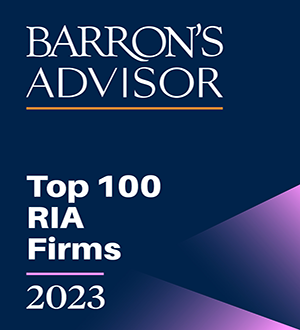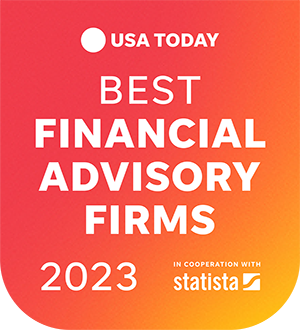Investment Outlook Spring 2021
By Argent Wealth Management, LLC on March 31, 2021
Going Through Changes…Fast
First Quarter Review and Second Quarter Outlook:
Change is inevitable, but the pace of change in new COVID-19 cases reported daily, economic data, fiscal policy, stock performance, and bond yields has been extraordinary over the past three months.
Change in COVID-19 Outlook
According to worldometers.info, on January 8 the U.S. reported 308,945 new cases of COVID-19. On that same day the seven-day moving average of vaccines administered was 719,517 according to the Center for Disease Control (CDC). On March 29 the U.S. reported 59,707 new cases of COVID-19 and the seven-day moving average of vaccines administered was 2,360,085. This exemplifies a tremendous and encouraging change in the first three months of this year. The Biden administration now expects vaccines to be available by mid-April to most adults in the U.S. According to the CDC, over 20% of all those over 18 years old already have been fully vaccinated. More importantly, over 49% of those over 65 years old, who are more vulnerable to COVID-19 symptoms and experience higher rates of mortality, have been fully vaccinated. Herd immunity is not far away. Many states have already started to loosen restrictions and open their economies. The drop in daily cases is sustainable given the pace of vaccinations in the U.S. Although Europe may not be vaccinating their population as quickly as the U.S., they too see light at the end of the tunnel.
Change in Economic Data and in Fiscal Policy
In part due to a faster than expected vaccine rollout, economic data has surprised positively, but there is still room for improvement in areas that were most impacted by the pandemic.

Despite improved economic data, the policy response remains aggressive. The U.S. Federal Reserve has vowed to remain accommodative until they see a sustained level of inflation above their 2% target. Fiscal policy makers have unleashed unprecedented amounts of stimulus over the past year. Congress passed a ~$2.5 trillion bill, the Cares Act, almost immediately after the S&P 500 index dropped over 30% in 30 days in the first quarter of 2020. That bill alone is equivalent to 13.1% of GDP. Congress passed another ~$900 billion bill prior to year-end 2020, and another ~$1.9 trillion bill earlier this year. By our estimates, fiscal stimulus in the last twelve months amounts to over 24% of GDP. Fiscal stimulus during the Global Financial Crises in 2008 was ~6.5% of GDP. Most of the stimulus in the last year was short-term focused with direct payments to households and direct support to businesses to get through the pandemic. COVID-19 was an acute challenge and was not caused by the popping of a bubble or structural issues, the typical causes of a recession. Therefore, congress was able to rally support to prop up the economy as they fought a “common enemy” in COVID-19.
There is now discussion and hope for longer-term fiscal stimulus in the form of investment in infrastructure. Like a business capital expenditure, infrastructure investment can have a positive return (positive Net Present Value) especially if it targets areas where productivity can be increased. Productivity advances due to improvements in transportation, internet infrastructure, renewable energy, and technology lead to faster economic growth and real GDP per capita (average wealth) growth for U.S. citizens.
However, with ambitious spending comes concerns about our fiscal deficit and inflation. Our fiscal deficit is at an all-time high.

Simultaneously, due to low interest rates the cost of paying for this debt stands at only 15% of GDP. The average since 1945 is 17.5% and it peaked in 1986 at over 28% according to the U.S. Department of Commerce (this is when long-term government bond yields were close to 15%).
However, there is a history of equity bull markets starting with record amounts of government debt. The 1942 to 1966 secular (long-term) bull market started with an 85 year high in debt/GDP, which continually increased until the mid-1950s. The bull market in stocks ended when debt/GDP was near a 36-year low. The secular bull market from 1982 to 2000 started when debt/GDP began to increase again after it was flat during a secular bear market from 1966 to 1982. The secular bull market we have been in since 2009 started when debt/GDP started to increase after declining prior to the Global Financial Crises.

In addition, since the U.S. is an issuer of currency (unlike users such as households and businesses or any country that does not issue debt solely in the form of its own currency), the U.S. cannot technically run out of money. For this reason, near term, the fiscal stimulus will continue to have a positive impact on the economy and the stock market. Remain bullish.
Having said that, the U.S. cannot simply issue currency without consequence, and if fiscal stimulus proves to be too much without tax increase offsets (overspending), the U.S. could have higher inflation than is healthy for the economy (sustainable inflation over 3% annualized is where the Federal Reserve would really start to get concerned). Faster than expected inflation would lead to the Federal Reserve raising interest rates to slow the pace of inflation; that would end the bull market we have been in since 2009. We are watching inflation indicators closely.
Change in Stock Market Trends

Reversion to the mean is inevitable, but how fast and when stock markets revert is the most difficult question to answer. No one predicted that in 2020 growth stocks would outperform value stocks by a record amount. In 2020 the Russell 1000 Growth Index ETF (IWF) returned 38.25% and the Russell 1000 Value Index ETF (IWD) returned 2.75%. Moreover, no one would have predicted that that by the end of quarter 1, 2021 value would almost have the same trailing one-year return as growth. Over the last year, growth stocks have barely outperformed value stocks. It is important to stay diversified.

A better than expected vaccine rollout and economic growth has led to cyclical value sectors such as energy and financial, outperforming traditional growth sectors such as technology year-to-date. Expect a moderation in this “catch up trade” from this point onward.
Change in Bond Yields

When economic growth is better than expected, investors demand more yield from their bonds to compensate them for the potential rise in inflation and real GDP growth. The chart below shows that U.S. Treasury yields are higher now than at any other point in the last year across almost all maturities. Despite a 2x increase in the 10-year treasury from just one year ago, yields remain historically low.

Investors only need to look back to 2017, when the 10-year treasury was hovering around 3%, to realize that a rise in bond yields is not a negative indicator for stocks over medium and longer-term time horizons. In 2017, SPY (SPDR S&P 500 ETF) returned 21.7%.
The rise in bond yields can temporarily cause returns in bonds to be negative. However, as yields rise bond investors start to collect more income, making their bonds less risky. For now, investors should remain conservative in their bond allocation by investing in investment grade bonds with overall time to maturity of 7 years or less.
It is important to remember that investment grade bonds remain the only asset class that exhibits both low volatility and no to low correlation with stocks. They remain the asset to own for ballast as there have been only two calendar years where both a long-term treasuries and stocks were both negative since 1940, but both are often positive in the same calendar year.
Changes and Portfolio Management
While change in economic and market dynamics are inevitable, investors should take a disciplined approach to portfolio management. We at Argent believe that using consistent data and applying an objective, logical perspective while maintaining an open and creative mind will help our clients to successfully navigate the ever changing world we live in.
Sign up to receive more information about Argent's Services and Solutions.
Argent Wealth Management, LLC is a group comprised of investment professionals registered with Hightower Advisors, LLC, an SEC registered investment adviser. Some investment professionals may also be registered with Hightower Securities, LLC (member FINRA and SIPC). Advisory services are offered through Hightower Advisors, LLC. Securities are offered through Hightower Securities, LLC.
This is not an offer to buy or sell securities, nor should anything contained herein be construed as a recommendation or advice of any kind. Consult with an appropriately credentialed professional before making any financial, investment, tax or legal decision. No investment process is free of risk, and there is no guarantee that any investment process or investment opportunities will be profitable or suitable for all investors. Past performance is neither indicative nor a guarantee of future results. You cannot invest directly in an index.
These materials were created for informational purposes only; the opinions and positions stated are those of the author(s) and are not necessarily the official opinion or position of Hightower Advisors, LLC or its affiliates (“Hightower”). Any examples used are for illustrative purposes only and based on generic assumptions. All data or other information referenced is from sources believed to be reliable but not independently verified. Information provided is as of the date referenced and is subject to change without notice. Hightower assumes no liability for any action made or taken in reliance on or relating in any way to this information. Hightower makes no representations or warranties, express or implied, as to the accuracy or completeness of the information, for statements or errors or omissions, or results obtained from the use of this information. References to any person, organization, or the inclusion of external hyperlinks does not constitute endorsement (or guarantee of accuracy or safety) by Hightower of any such person, organization or linked website or the information, products or services contained therein.
Click here for definitions of and disclosures specific to commonly used terms.



